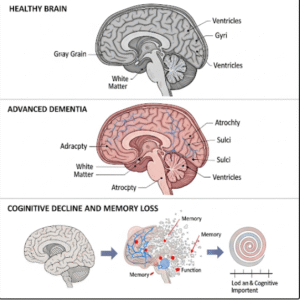Overview
Adult Still’s Disease (ASD) is a rare type of inflammatory arthritis that affects adults. Characterized by high spiking fevers, a salmon-colored skin rash, and joint pain, the disease is considered a form of systemic autoinflammatory disorder. While its exact cause is unknown, it can be challenging to diagnose due to overlapping symptoms with other conditions. Early recognition and treatment are crucial to prevent long-term joint damage and other complications.
What is Adult Still’s Disease?
Adult Still’s Disease is a systemic inflammatory disorder, meaning it can affect the whole body. It shares features with systemic juvenile idiopathic arthritis (sJIA), which occurs in children. Symptoms often appear suddenly and may come and go in cycles.
It’s classified as a rare disease, with onset usually occurring between ages 16 and 35, though it can affect people at any age. It is marked by chronic inflammation that affects joints, internal organs, and other tissues.
Symptoms
Symptoms vary in severity and may develop suddenly. Common signs include:
- High spiking fever, often peaking once or twice a day
- Salmon-pink rash, usually appearing with fever (commonly on the chest or limbs)
- Joint pain and swelling, particularly in the wrists, knees, and ankles
- Muscle pain
- Sore throat
- Enlarged lymph nodes
- Fatigue and weakness
- Weight loss
- Chest pain or difficulty breathing (if the lining of the lungs is inflamed)
Symptoms may flare and subside unpredictably.
Causes
The exact cause of Adult Still’s Disease is unknown, but potential contributors include:
- Abnormal immune response: The immune system mistakenly attacks healthy tissue
- Infections: Certain viruses or bacteria might trigger the condition
- Genetic predisposition: Some genetic markers may increase susceptibility
ASD is considered an autoinflammatory disease, meaning it originates from innate immune system dysfunction rather than from autoantibodies.
Risk Factors
Although Adult Still’s Disease is rare, some factors may slightly raise the risk:
- Age: Most commonly occurs between ages 16 and 35
- Gender: Affects men and women equally
- Family history: Rare familial cases suggest a possible genetic link
- Recent viral infections
Due to its rarity, clear risk factors remain poorly defined.
Complications
If left untreated, Adult Still’s Disease may lead to serious health problems, including:
- Chronic arthritis and joint destruction
- Macrophage activation syndrome (MAS): A life-threatening overactivation of the immune system
- Pericarditis or pleuritis: Inflammation around the heart or lungs
- Liver abnormalities
- Amyloidosis: A buildup of abnormal protein in organs
Early and aggressive treatment is crucial to prevent these outcomes.
Prevention
There are no known strategies to prevent Adult Still’s Disease since the cause remains unclear. However:
- Early diagnosis and medical care can reduce the risk of joint and organ damage
- Regular monitoring by a rheumatologist helps manage flare-ups
- Prompt treatment of infections may potentially reduce immune triggers
Maintaining overall health and addressing symptoms early is the best approach.
Treatment Options Korea
Treatment focuses on controlling inflammation, relieving symptoms, and preventing complications:
- Nonsteroidal Anti-Inflammatory Drugs (NSAIDs)
- For fever and joint pain
- Often used in mild cases
- Corticosteroids
- Prednisone reduces inflammation quickly
- Used during flare-ups or in moderate-to-severe cases
- Disease-Modifying Antirheumatic Drugs (DMARDs)
- Methotrexate is often used for persistent joint symptoms
- Slows disease progression
- Biologic Agents
- IL-1 inhibitors (anakinra) and IL-6 inhibitors (tocilizumab) target key inflammatory pathways
- Used in severe or refractory cases
- Supportive Therapies
- Physical therapy for joint function
- Nutritional support if appetite or weight is affected
Long-term management typically involves a combination of medications and lifestyle support under a rheumatologist’s guidance.













